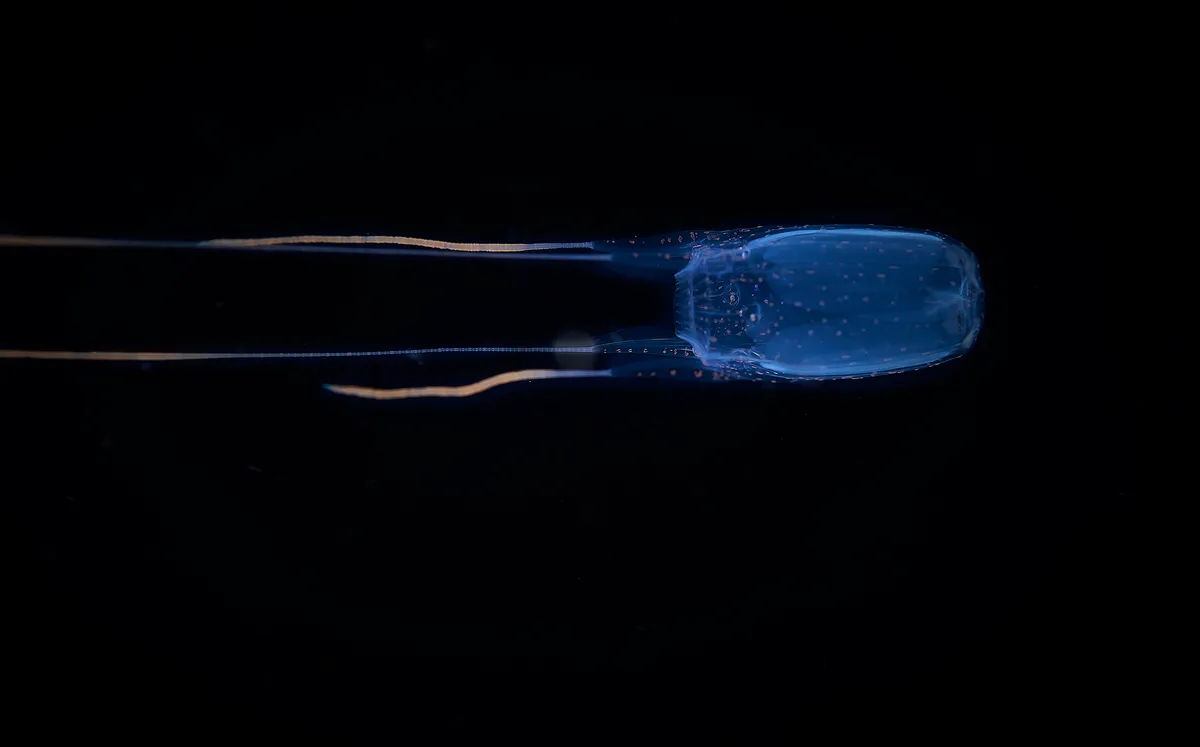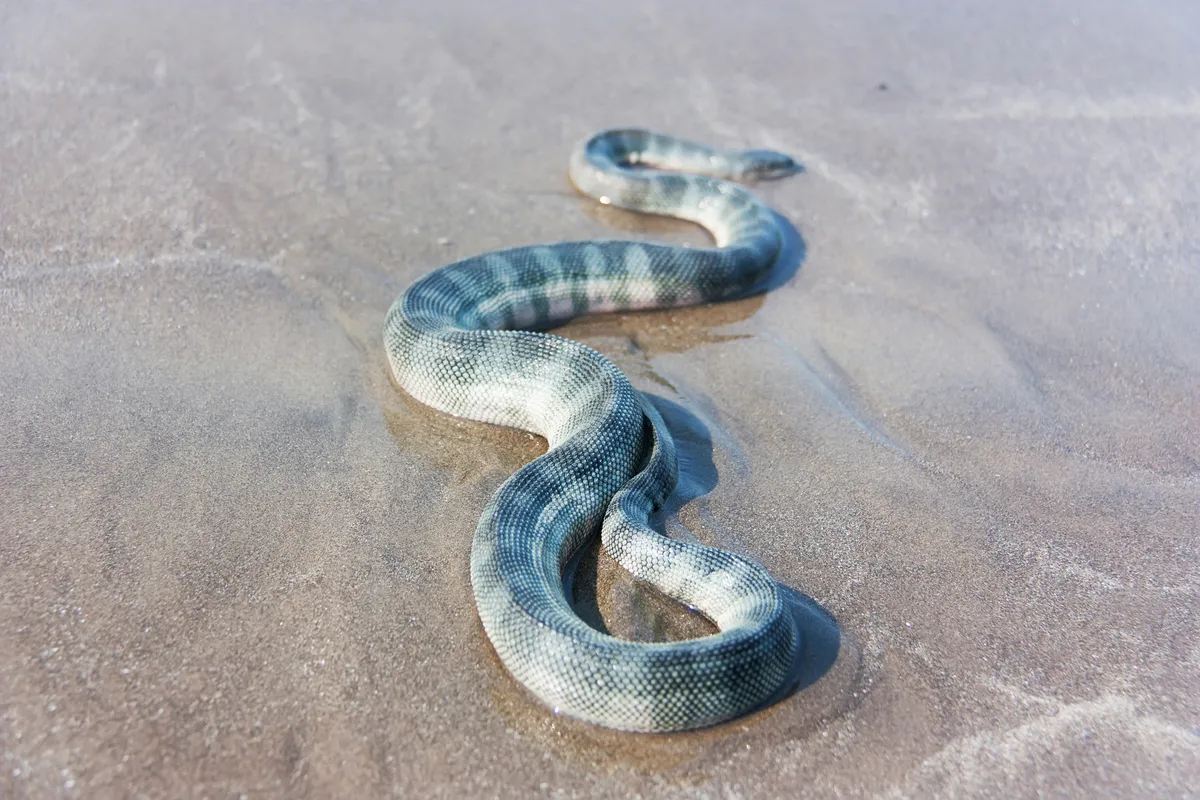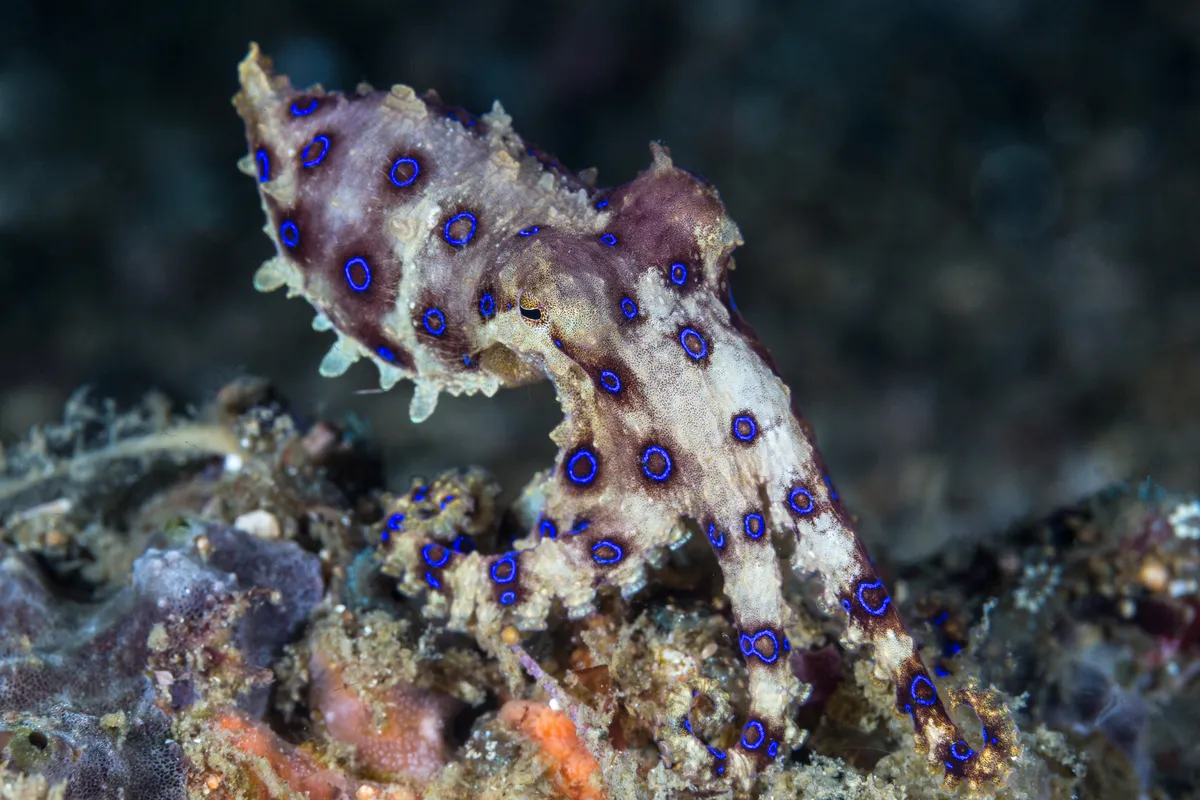The ocean can be a dangerous place, and not just from the creatures you might expect. A surprising range of marine species, including fish, reptiles, crustaceans and cnidarians, have the power to cause serious injury or even death to humans.
Strength often plays a role but, as this list demonstrates, size certainly isn’t everything in the deadliness stakes. Read on to learn about some of the world's most deadly sea creatures
11 most dangerous animals in the ocean
Box jellyfish

Found in coastal marine waters around the world, the box jellyfish is one of the world’s deadliest animals in the ocean thanks to a venom containing toxins that strike at the heart, nervous system and even skin cells of anyone unlucky enough to touch one of its tentacles. The box jellyfish’s tentacles can reach up to 3m long, making it an effective hunter of small fish.
- "Death can come within five minutes": Discover the 10 deadliest, most venomous, jellyfish on the planet
- It has 24 eyes and is one of the world's deadliest animals, with a sting so venomous it can kill a human in minutes
It’s common for swimmers who come into contact with them to go into shock and drown, or die of heart failure, before they can return to the shore. Officially, between 40 and 100 people die from box jellyfish stings each year, though the true figure is likely to be far higher given the fact that deaths from jellyfish stings are not counted in many jurisdictions where the creatures are common.
- What’s the most venomous animal in the ocean?
- 10 animals that can kill – or seriously hurt you – even when they're dead
- Can jellyfish sting even when they're dead?
We named the box jellyfish one of the world's most venomous animals
Beaked sea snake

Thought to be the deadliest of the 64 species of snakes that spend the majority of their lives in the ocean, the beaked sea snake delivers its venom via a small pair of fangs at the front of its mouth. This venom contains a powerful toxin that causes paralysis, including of the diaphragm, potentially leading to respiratory failure.
- Discover the world of the beautiful, yet much-feared, sea snake: do these venomous serpents deserve their deadly reputation?
- 6 deadliest sea snakes on the planet: These beautiful sea serpents are so lethal they can kill with one bite
- "That's where I met the snake!” Watch moment diver comes face-to-face with one of the ocean's most deadly, venomous creatures
Fortunately, bites from sea snakes are rare, thanks to their mainly non-aggressive attitude towards humans, and the fact that not every bite delivers venom. Most bites come as a result of fishers trying to disentangle snakes from their nets. The exception to the rule is the beaked sea snake, which is considered aggressive.
Cone snail

How could a snail be one of the world's deadliest sea creatures? Don't be fooled! These pretty crustaceans, which live in temperate to tropical waters in the Indian and Pacific Oceans, hunt by sending out a hollow, venom-filled 'harpoon' to spear passing fish which they then pull, paralysed, into their mouths.
While it’s rare for humans to be stung – only by picking up or accidentally stepping on a cone snail would you be at risk – there have been around 30 deaths recorded, thanks to the extraordinary potency of the cone snail’s venom, and the fact that no anti-venom exists.
Of the 700 species of cone snail, only a few (including the textile, geographic and tulip) are venomous enough to kill a human, but better to err on the side of caution and avoid picking up any cone snail shells you find on the seabed or beach.
Stonefish

Cleverly camouflaged on rock, coral reef or the seabed and capable of staying completely still, stonefish are so dangerous because they are practically invisible. That’s dangerous to the prey they ambush and swallow whole, but equally dangerous to any creature who falls foul of their defensive dorsal spines, which stand on end to deliver a powerful venom if the fish is disturbed.
Stonefish stings are said to be intensely painful and lead to swelling of the entire affected limb within minutes, as well as necrosis and sometimes death, if not treated quickly enough, or depending upon the location of the sting. Fortunately fatalities are rare, with heat immersion (which denatures the venom) and the injection of anti-venom first-line treatments.
We named them one of the deadliest fish in the ocean
Blue-ringed octopus

Don’t be deceived by its beautiful markings or the fact that it’s adorably pocket-sized; this family of Pacific and Indian Ocean octopuses boasts one of the most potent venoms in the sea. Their salivary glands produce tetrodotoxin, another poison that rapidly causes paralysiswith potentially fatal consequences.
- Squid vs octopus: what's the difference between these multiple-limbed sea creatures?
- This tiny, deadly animal has venom so lethal it could kill a human within minutes – and there's no antidote
Injuries to humans come from either being bitten by the octopus (reportedly a near-painless experience, so you may not even know you’ve been bitten), or from accidentally eating it – blue-ringed octopus disperse their venom throughout their bodies as a defence mechanism, the blue rings flashing up as a warning when the creature is threatened. It’s thought that the venom is far less potent when consumed, rather than injected, but probably best to avoid snacking on any brightly coloured octopuses just in case.
Pufferfish

Another creature that packs a neurotoxic punch when consumed is the pufferfish – the key difference from the blue-ringed octopus though, is that puffer fish are considered a delicacy, appearing on menus in Japan as ‘fugu’. Chefs wishing to serve the fish must have a special license, issued only to those who’ve undergone training in how to prepare it in such a way that the toxic parts (including the liver, ovaries, eyes and skins) don’t contaminate the edible parts.
- These toxic ‘water balloon’ fish contain enough poison in their gonads to kill 30 humans – and they draw sand circles to impress a mate
- Why are pufferfish so deadly poisonous - able to kill a human - and how on earth do they avoid poisoning themselves?
Before the introduction of the licensing system there were dozens of deaths a year from eating fugu in Japan, but fatalities have since fallen to low single digits - most of the cases of food poisoning that occur these days are as a result of people catching the puffer fish themselves and trying to prepare them at home.
Stingray

Your chances of being attacked by a stingray are vanishingly small – these gentle creatures spend their days buried sand on the seabed and gliding gracefully around the ocean. Yet they have been known to injure people who have accidentally disturbed them, usually by standing on them (though the one that killed Australian conservationist Steve Irwin was swimming).
The danger comes in the form of venomous barbs along their tail, which the stingray whips when threatened. It’s first form of defence, it should be noted, however, is swimming away, which is why divers and snorkellers swimming with stingrays are reminded not to crowd them, and to shuffle their feet on the seabed to warn of their approach.
Saltwater crocodile

The largest reptile on Earth, the saltwater crocodile – or estuarine crocodile - can grow to 7m long and weigh up to 1,000kg. They also have the strongest bite in the animal world and are aggressive when it comes to defending their territory – typically brackish coastal waters – making them an extremely dangerous proposition for anyone who crosses their path.
- Crocodile vs alligator: what's the difference between these two fearsome predators?
- Are there any crocodiles in the sea?
- Can alligators and crocodiles crossbreed?
Even so, rates of crocodile attacks on humans tend to be massively overhyped – there were 47 attacks on humans by saltwater crocodiles in Queensland, Australia, between 1985 and July 2023, 13 of which ended in a fatality.
We named saltwater crocodiles as one of the deadliest animals to humans
Great white shark

The great white shark is perhaps the most famous of all our deadly sea animals, but does it deserve that fearsome reputation? Of the 949 confirmed unprovoked attacks by sharks on humans ever recorded, 351 were by great white sharks, with 59 of these attacks proving fatal. Tiger and bull sharks are the next deadliest with these three species able to inflict maximum damage because of their large size (great white sharks can measure up to 6m long and weigh 1,800kg), the fact that their teeth have evolved for tearing, not holding prey, and are commonly found in areas used by humans, such as tropical coastlines.
- 34 incredible, hard to believe shark facts that celebrate this fascinating, yet much-maligned fish
- Great white shark: your expert guide to the ocean's ultimate apex predator that can detect blood from 3 miles away
That said, the team at International Shark Attack Files at the Florida Museum of Natural History stress that these statistics need to be taken with a pinch of salt as easily identifiable species tend to skew any list of shark attacks.
As with crocodile attacks, the number of unprovoked attacks by sharks each year is actually very small – there were just 108 in 2022, including 32 bites coming from situations where sharks reacted to harassment by divers or fishers. Of these 108, there were nine shark-related deaths.
Lionfish

Capable of striking fear into the heart of divers and snorkellers everywhere, this marine predator is as dangerous as it is beautiful. That’s because in amongst their softly fluttering fins are more than a dozen spines able to deliver a dose of powerful venom that causes extreme pain and, in rare cases, symptoms including temporary paralysis, shortness of breath and nausea.
- World's 10 most beautiful killers: where stunning looks and lethal power collide...
- Most beautiful fish: Are these 8 species are the ocean's most stunning fish?
Lionfish, whose range now stretches across the entire Indo-Pacific region, are docile creatures not known to attack humans – injuries occur when people get too close, whether inadvertently or because they are attempting to capture lionfish for the lucrative aquarium trade.
Portuguese man of war
The Portuguese man of war is a colony of thousands of different organisms, known as polyps, all working together to create what appears to be a single animal. They travel by drifting on the currents and the wind, and clump together in herds of 1,000 or more.
That’s why the first sight of just one individual is enough to close a beach.
It’s unlikely a Portuguese man of war could kill you, but its sting is extremely painful, as 10,000 Australians find out every year.

